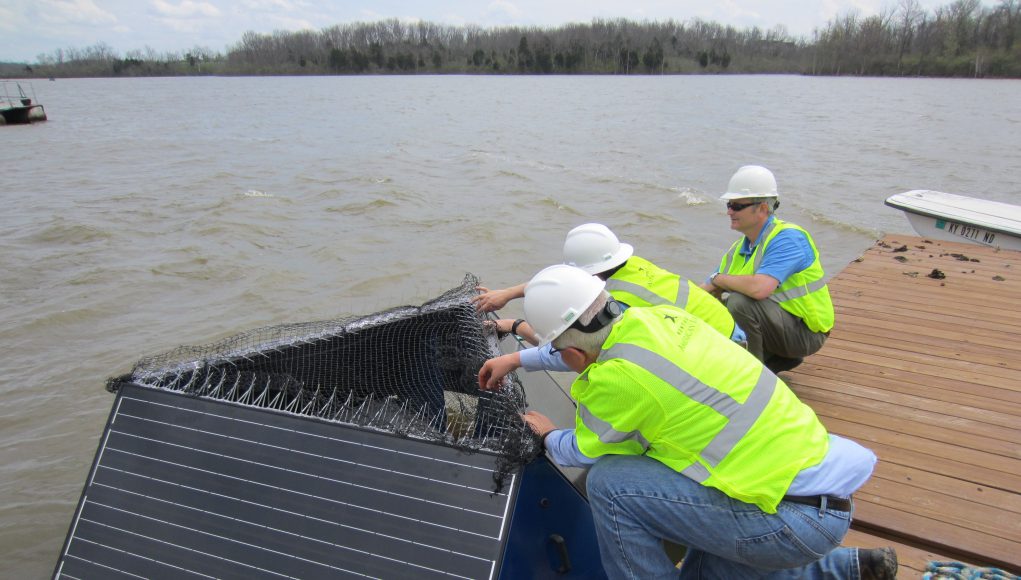Greening up the Reservoir
New solar-powered, sonic units at the Reservoir treat algae
Motorists along Richmond Road in Lexington may have noticed some new objects in the reservoir at Lake Ellerslie Fishing Club recently. The seven black units aren’t debris floating to the surface of the lake. Rather, they are a $275,000 investment in solar-powered, sonic buoys designed to help address a periodic problem associated with using reservoirs for drinking water supply: algae.
Algae in the reservoir that connects Jacobson Park and the fishing club through a culvert under Richmond Road appears especially during hot, dry periods of weather. Consumers often report a “musty” or “earthy” taste to the water, even though it remains safe to consume. In the past, this issue has been addressed by treating the reservoir with copper sulfate, but the new buoys offer a different solution.
The buoys use solar energy to transmit ultrasonic waves continuously that disrupt algal cells, causing them to sink and preventing them from multiplying. The result is a reduced amount of algae in the reservoir, a reduction in the use of copper sulfate, and a reduction in taste and odor issues for customers. The buoys have no impact to fish in the reservoir.
“We’re continually looking for ways to enhance service to our customers, reduce our environmental footprint and gain efficiencies in our processes,” said David Shehee, superintendent of water quality and environmental compliance for Kentucky American Water. “We’re fortunate to have the Kentucky River and the Jacobson Reservoir as sources of water supply, but each has its pros and cons. Selecting how much water to draw from each source on a daily basis is a careful balancing act, factoring in the ‘raw’ condition of the water, the amount of chemicals needed to treat each source, the amount of energy required to pump it to the treatment plant and other variables. We believe the new sonic units will help remove a negative factor that sometimes affects whether or not we pull more water from the reservoir. This solution is environmentally friendly and provides us greater flexibility in our decision making, ultimately translating not only into better tasting drinking water, but also greater operational efficiency, and that’s good news all around.”
For more Hamburg area news, subscribe to the Hamburg Journal weekly digital newsletter.
This article also appears on page 8 of the June print edition of the Hamburg Journal.












